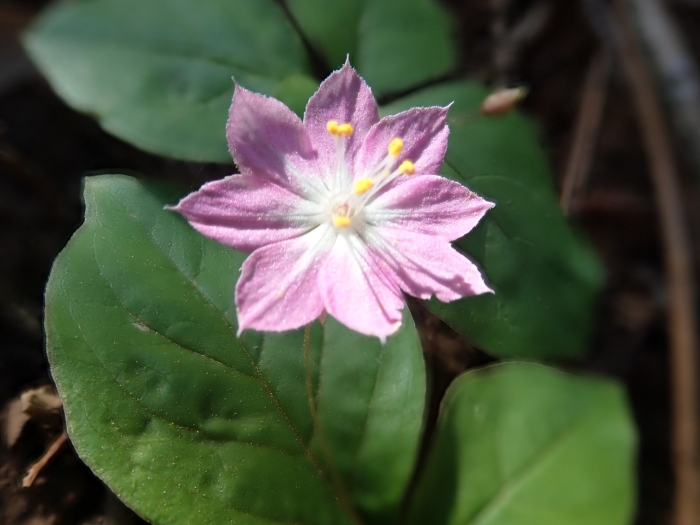Pacific Starflower
(Lysimachia latifolia)
Pacific Starflower (Lysimachia latifolia)
/
/

joergmlpts
CC BY 4.0
Image By:
joergmlpts
Recorded By:
Copyright:
CC BY 4.0
Copyright Notice:
Photo by: joergmlpts | License Type: CC BY 4.0 | License URL: http://creativecommons.org/licenses/by/4.0/ | Rights Holder: joergmlpts | Publisher: iNaturalist | Date Created: 2021-05-11T18:26:34Z |
























Estimated Native Range
Summary
Lysimachia latifolia, commonly known as Pacific starflower, is a low-growing, creeping perennial herb native to the understory of coniferous forests and mixed woodlands in the Pacific Northwest of North America. It typically reaches heights of 4-8 inches (10-20 cm) and spreads via rhizomes to form a dense ground cover. The plant features dark green, lanceolate leaves arranged in a whorl around the stem, and it produces star-shaped white or occasionally pink flowers from late spring into early summer (April or May), which are modest in size but can be quite numerous.
Pacific starflower is valued for its ability to thrive in shady, moist conditions, making it an excellent choice for woodland gardens, shaded borders, and naturalized areas. It is also appreciated for its evergreen foliage in mild climates, providing year-round ground cover. In cultivation, it prefers cool, moist, well-drained soils and can tolerate a range of light conditions from full shade to partial sun. While generally low-maintenance, it can spread aggressively in favorable conditions, so gardeners should monitor its growth to prevent unwanted spread. It has no major pest or disease problems, but its invasive potential should be considered before planting outside its native range.CC BY-SA 4.0
Pacific starflower is valued for its ability to thrive in shady, moist conditions, making it an excellent choice for woodland gardens, shaded borders, and naturalized areas. It is also appreciated for its evergreen foliage in mild climates, providing year-round ground cover. In cultivation, it prefers cool, moist, well-drained soils and can tolerate a range of light conditions from full shade to partial sun. While generally low-maintenance, it can spread aggressively in favorable conditions, so gardeners should monitor its growth to prevent unwanted spread. It has no major pest or disease problems, but its invasive potential should be considered before planting outside its native range.CC BY-SA 4.0
Plant Description
- Plant Type: Herb
- Height: 1.5-3 feet
- Width: 1-2 feet
- Growth Rate: Moderate
- Flower Color: Pink, White
- Flowering Season: Summer
- Leaf Retention: Deciduous
Growth Requirements
- Sun: Full Sun, Part Shade
- Water: Medium
- Drainage: Medium, Slow
Common Uses
Border Plant, Low Maintenance, Water Garden
Natural Habitat
Understory of coniferous forests and mixed woodlands in the Pacific Northwest of North America
Other Names
Common Names: Broadleaf Loosestrife, Broad-Leaved Yellow Pimpernel, Broad-Leaved Starflower, Pacific Starflower, Western Starflower, Broadleaved Yellow Loosestrife
Scientific Names: , Lysimachia latifolia, Alsinanthemum europaeum var. latifolium, Lysimachia trientalis var. latifolia, Trientalis borealis subsp. latifolia, Trientalis europaea subsp. latifolia, Trientalis europaea var. latifolia, Trientalis latifolia,
GBIF Accepted Name: